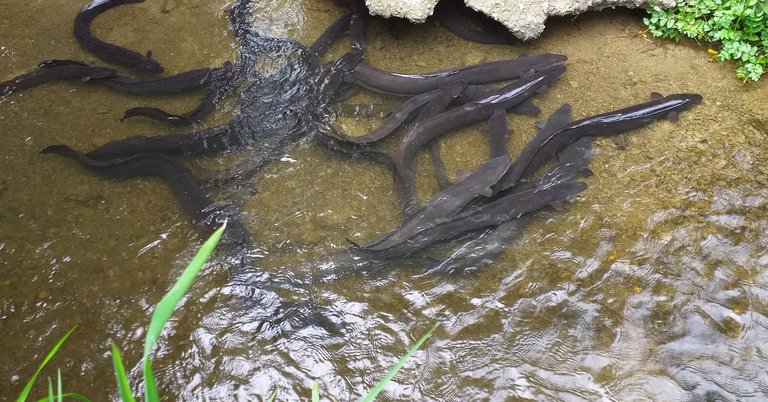


It is with some dismay that Council has learnt of up to 60 tuna (longfin eels) being killed at Duck Creek/Wai-o-Hata Stream in Whitby last month.
The longfin eel population in New Zealand is at risk, and the large numbers of eels killed here are a huge blow says Nigel Clarke, Manager Porirua Harbour, Catchments and Resource Recovery.
"Some of the tuna would have been 70-80 years old and had become firm friends with people in the Whitby community," Nigel says.
"Tuna in Council reserves are not allowed to be caught, and unfortunately the signs we've put in to remind people have been continually ripped out.
"Please help us protect the remaining eels."
The Department of Conservation is responsible for managing tuna, so if you see any harm being done to the remaining eels, please call the Department of Conservation hotline 0800 362 468.
A media statement issued by Te Rūnanga o Toa Rangatira (the Runanga), provides more information:
10 OCTOBER 2023
MEDIA STATEMENT: SENSELESS CULLING OF LONGFIN TUNA AT WAI O HATA STREAM.
Te Rūnanga o Toa Rangatira (the Runanga), the Department of Conservation and Porirua City Council are extremely disappointed to learn of the senseless killing of up to 60 longfin tuna at Wai-o-Hata stream, Whitby earlier this week.
Staff of the Rūnanga were alerted to the incident on Tuesday evening by community environmental group, Pest Free Whitby. Iwi monitor, Sharli-Jo Soloman visited the site and found the tuna which had likely been there for at least a week.
The Wai-o-Hata stream, located adjacent to Whitby Collegiate, is a frequent location for collaborative efforts aimed at enhancing the habitat for the tuna. Over time, the school, Whitby residents, local environmental groups, the Porirua City Council, Sustainable Coastlines and Ngāti Toa have collaboratively worked together to make positive changes to the site. The community were very protective of them.
Te Wai-o-Hata is an awa of significance to Ngāti Toa, as it was traditionally used for mahinga kai (food gathering). The Rūnanga had been undertaking regular monitoring, assessments and remediations on the stream system.
The Rūnanga, Environmental Manager Aimee Bishop says, “this senseless act has had a detrimental impact on the Wai-o-Hata which cannot be understated. The tuna population is under threat and here we had an abundant presence which has been destroyed. It will take a considerable amount of time to restore this area”.
Aimee added that, “this thoughtless act demonstrates a complete lack of consideration for the long-term consequences that this will have on the tuna population and the awa. These tuna represented one of the largest populations of longfin tuna living outside of DOC and council reserves in our rohe”.
Longfin eels are slow-growing – the youngest eel would have been roughly 30 years old, the oldest upwards of 70 years old: they had lived in Te Wai-o-Hata longer than the suburb of Whitby had been in existence. Longfins also only breed once, at the end of their lives. The death of the entire mature tuna population, all at once, before they could breed, will affect this catchment for decades to come.
“The longfin tuna is endemic to New Zealand and their numbers are ‘At Risk-Declining’. They are less able to cope with changes to their environment due to pollution, dams, loss of vegetation around their habitat, this makes them excellent as an indicator species for awa quality. It is incredibly sad to have lost such a large number from this mature population. The presence of these tuna is testament to what has been achieved through the collaboration of many”. Says Angus Hulme-Moir, Operations Manager, Department of Conservation.
2 Nov 2023